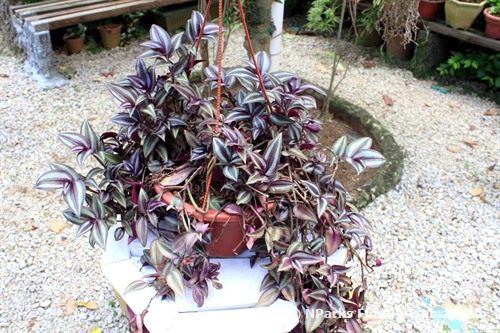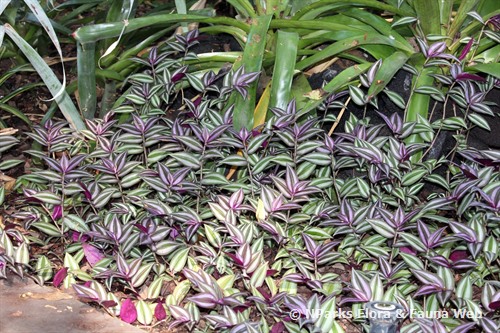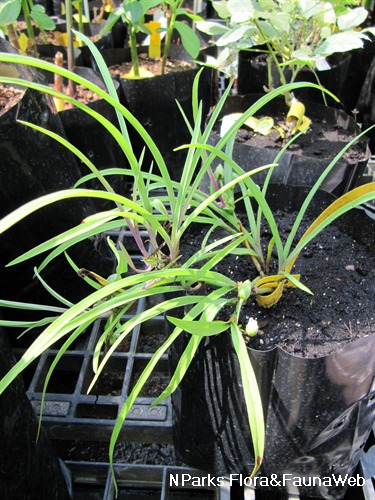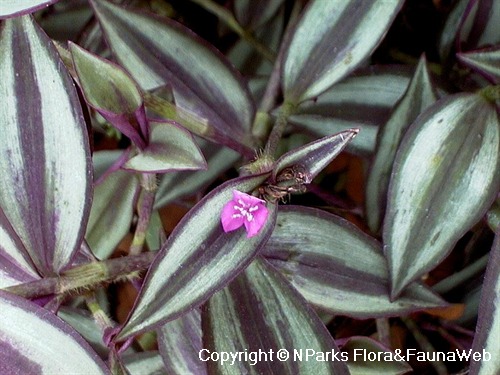
Back
Tradescantia zebrina Bosse
| Family Name: | Commelinaceae |
| Synonyms: | Zebrina purpusii, Zebrina pendula, Tradescantia pendula |
| Common Name: | Silver Inch Plant, Wandering Jew, 吊竹梅 |
Name
Classifications and Characteristics
| Plant Division | Angiosperms (Flowering Seed Plants) (Monocotyledon) |
|---|---|
| Plant Growth Form | Creeper, Herbaceous Plant |
| Lifespan (in Singapore) | Perennial |
| Mode of Nutrition | Autotrophic |
Biogeography
| Native Distribution | Mexico |
|---|---|
| Native Habitat | Terrestrial |
| Preferred Climate Zone | Tropical |
| Local Conservation Status | Non-native |
Description and Ethnobotany
| Growth Form | Herbaceous trailing plant, can grow up to 15 cm tall and spread 5 wide. |
|---|---|
| Foliage | Evergreen leaves, hairy and striped iridescent silver-purple above, uniformly purple below, sessile, measuring about 3 cm long. |
| Stems | Stems green with purplish spots, produce transparent watery sap when cut. |
| Flowers | Flowers pink, 3 petals, seldom observed when plant is grown indoors. |
| Fruit | Fruits bearing 2-seed capsules |
| Others - Plant Morphology | Sap from stems may cause contact irritation or rashes in humans and dogs. |
| Cultivation | Prefers bright shade and moist, fertile organic soils. Ideal as creeping groundcover or bedding plants. Can also be grown in hanging baskets. Container plants tend to get leggy with age - restart new plants using stem cuttings. |
| Etymology | Genus name Tradescantia honours John Tradescant, who is an English horticulturist during the 17th century. |
| Ethnobotanical Uses | Edible Plant Parts : Edible Leaves Food (Herb or Spice) Medicinal: Leaves made into tea for kidney ailments. |
Landscaping Features
| Desirable Plant Features | Ornamental Foliage |
|---|---|
| Landscape Uses | General, Suitable for Hanging Baskets, Container Planting, Interiorscape/ Indoor Plant |
| Thematic Landscaping | Silver Garden, Naturalistic Garden |
| Usage Hazard - Cons | Invasive / Potentially Invasive |
Plant Care and Propagation
| Light Preference | Semi-Shade |
|---|---|
| Water Preference | Moderate Water |
| Plant Growth Rate | Moderate |
| Rootzone Tolerance | Easy to Grow, Fertile Loamy Soils, Well-Drained Soils, Moist Soils |
| Propagation Method | Stem Cutting, Stolon / Runner |
| Planting Distance | 0 |
Foliar
| Foliage Retention | Evergreen |
|---|---|
| Mature Foliage Colour(s) | Purple, Silver / Grey |
| Mature Foliage Texture(s) | Hairy / Hirsute |
| Foliar Type | Simple / Unifoliate |
| Foliar Arrangement Along Stem | Opposite |
| Foliar Shape(s) | Non-Palm Foliage (Elliptical) |
| Foliar Venation | Parallel |
| Foliar Margin | Entire |
| Foliar Apex - Tip | Acuminate |
| Foliar Base | Cuneate |
| Typical Foliar Area | Microphyll ( 2.25cm2 - 20.25 cm2 ) |
| Leaf Area Index (LAI) for Green Plot Ratio | 3.5 (Shrub & Groundcover - Monocot) |
Non - Foliar and Storage
| Stem Type & Modification | Herbaceous |
|---|---|
| Root Type | Underground (Fibrous Root) |
Floral (Angiosperm)
| Flower & Plant Sexuality | Bisexual Flowers |
| Flower Colour(s) | Pink |
|---|---|
| Flowering Habit | Polycarpic |
Image Repository
Others
| Master ID | 1235 |
|---|---|
| Species ID | 2528 |
| Flora Disclaimer | The information in this website has been compiled from reliable sources, such as reference works on medicinal plants. It is not a substitute for medical advice or treatment and NParks does not purport to provide any medical advice. Readers should always consult his/her physician before using or consuming a plant for medicinal purposes. |

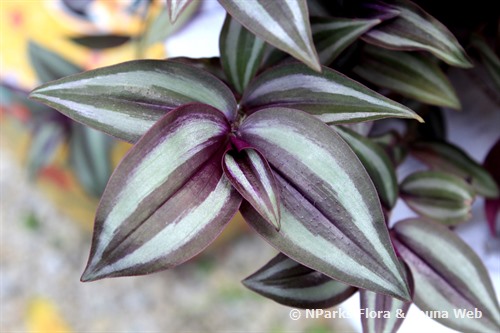
.jpg)
